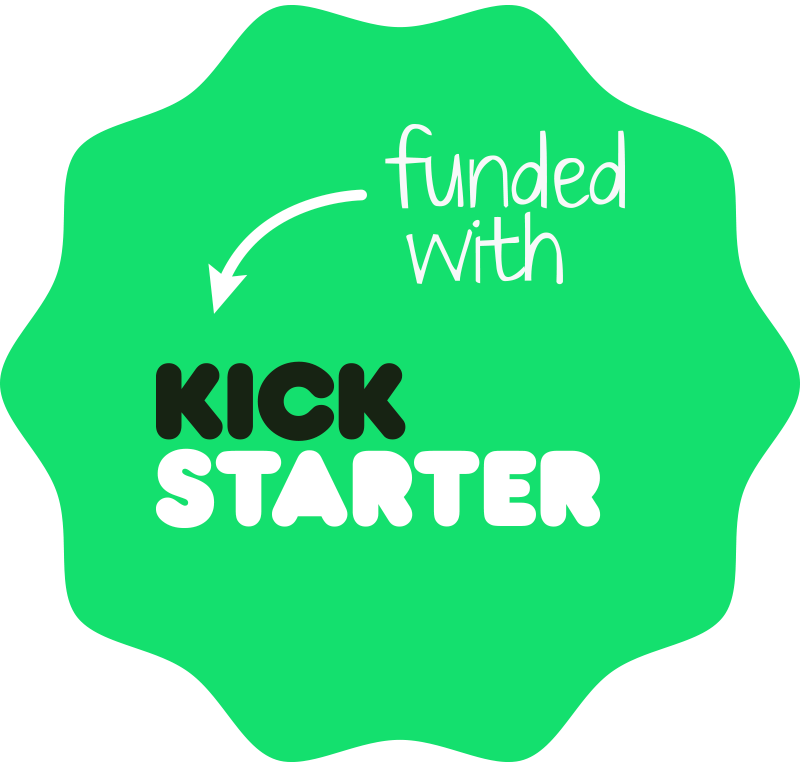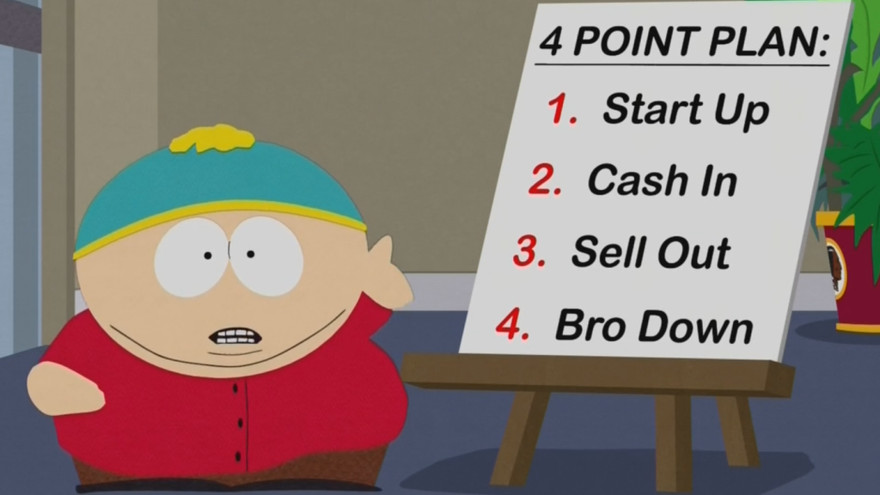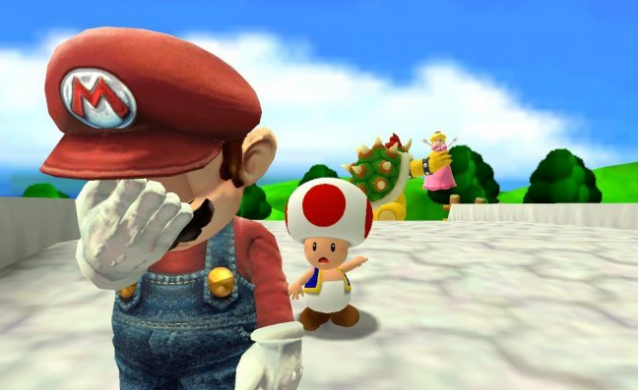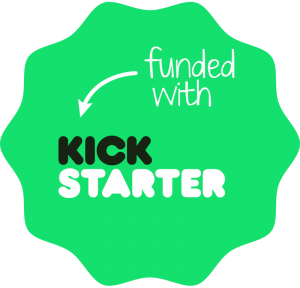 Last week was the 6-month anniversary of the launch of our successful InnerSpace campaign on Kickstarter. What started on that exciting October morning was about 45 days of excitement, stress, distress, and eventually, jubilation. However, it wasn’t just a few weeks of hard work that led to a successful campaign, but the accumulation of months of strategic planning, research, and preparation (as well as just a little good work on the development side to actually make a game to show) that allowed half a dozen college students to successfully raise over $25,000 on Kickstarter.
Last week was the 6-month anniversary of the launch of our successful InnerSpace campaign on Kickstarter. What started on that exciting October morning was about 45 days of excitement, stress, distress, and eventually, jubilation. However, it wasn’t just a few weeks of hard work that led to a successful campaign, but the accumulation of months of strategic planning, research, and preparation (as well as just a little good work on the development side to actually make a game to show) that allowed half a dozen college students to successfully raise over $25,000 on Kickstarter.
I’d like to approach this as a postmortem, of sorts, for our crowdfunding campaign. I’ll mostly focus on our approach towards marketing and strategy, rather than our attitude towards development to prepare a game for Kickstarter or Indiegogo (though, that could make for an entire second post in the future). As many indie game developers can attest, taking time to pull away from Unity forums to study the business of your studio should be considered a key to the potential success of any independent game. So, fellow video game marketers, community managers, and producers, as well as developers interested in taking a break from technical blogs, let’s get started.
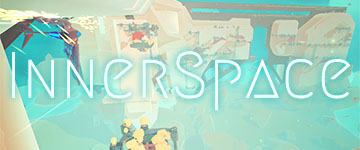 TL;DR
TL;DR
Here are the main takeaways (for those who don’t want to read)
- Determine your market, and be honest about it. How big of an audience will be interested, and how do you reach them?
- Have a demo for press and YouTubers. I can’t stress this enough.
- All hands on deck. For 30 days, Kickstarter is your full-time job.
What We Did Right
Research
As a part of our pre-production process, we had regular pitch meetings in which each of us pitched multiple game ideas. This part of the process was good for a few reasons. It gave us a multitude of ideas for games that we would potentially spend the next few years of our lives on, and it as helped us determine what type of games we were interested in making.
PolyKnight Games was founded on the idea of making games that we hadn’t seen before. We weren’t interested in easy solutions. Because of this, we also recognized the type of people that would be buying our games. Each time we came across an idea we wanted to explore, we realized that they wren’t the type to garner a broad audience. And that was ok. However, the important thing is that we recognized this. We assumed our work wouldn’t necessarily become a trending sensation that would go viral, with hundreds of YouTubers with millions of subscribers screaming and ranting about our game. At absolute best, we aimed to create a critical darling with a small, but passionate cult following. This was the first lesson: we learned our market.
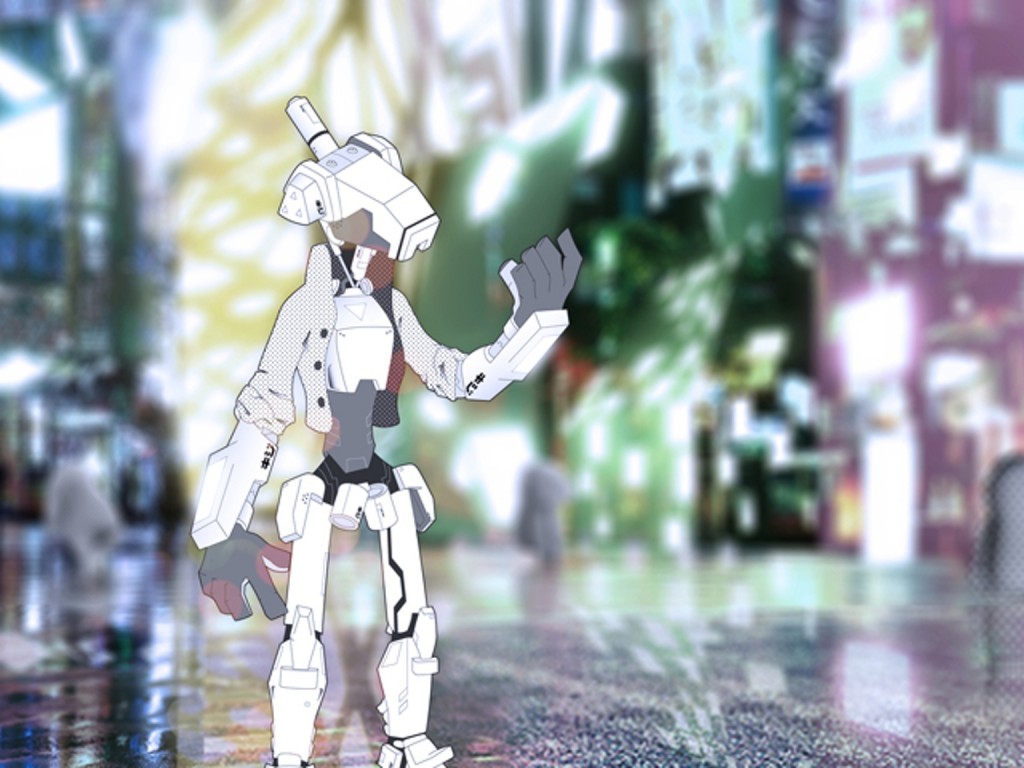 After we decided to develop InnerSpace, I spent the summer researching other crowdfunded games. I wanted to find games that were going to be similar in scope, by startups about our size, which were a similar tone to what we were making. We were creating a game about personal exploration with a cryptic, symbolic narrative. We already knew our target market was going to be people who sought games with deeper, more artistic purposes. If we caught the eye of people beyond that demographic, awesome, but that was to whom we needed to cater. Because of this, I sought other projects like that.
After we decided to develop InnerSpace, I spent the summer researching other crowdfunded games. I wanted to find games that were going to be similar in scope, by startups about our size, which were a similar tone to what we were making. We were creating a game about personal exploration with a cryptic, symbolic narrative. We already knew our target market was going to be people who sought games with deeper, more artistic purposes. If we caught the eye of people beyond that demographic, awesome, but that was to whom we needed to cater. Because of this, I sought other projects like that.
While I found many, one clear match was a game titled HomeMake, which ran in June and hit a goal of $15K. HomeMake was visually striking and mysterious. It was also being developed by a small team that was working on their first project. The tone of their video was very different from the typical interview-focused fare and, instead, focused on the game. This was a trend I started recognize in a number of campaigns.
Along with the shift in video style, I recognized a change in the types of rewards offered. The older the campaign, the more emphasis there was on physical rewards. After so many projects have come and gone, though, the novelty of shirts and posters seems to have worn off. Instead, I found there was far more interest in “experiential” rewards. Rewards that allowed the backer something personalized in the game, be it a chance to design an enemy or taking part in backer-only development forums, had become the new fashion.
Through in-depth research, we had determined our market, how to brand InnerSpace, and how best to prepare a campaign page. Yet, I had still to fill many gaps in my knowledge.
It was during this time that I also sought out as much advice as I could. Luckily, I had a few contacts within the Dallas crowdfunding and gaming community that I was able to interview. One in particular was my friend, Enrique Dryere, from Triple.B.Titles, the developers of two successful Kickstarter campaigns: Ring Runner: Flight of the Sages and Pop-Up Dungeon. From him, I gained significant advice regarding what to expect during the campaign, how to approach rewards, and specifically, as he learned from his Pop-Up Dungeon campaign, how and why one should approach YouTubers that specialize in the type of game you’re making (I’ll get into that, later).
Along with interviewing friends who had gone through the crowdfunding gauntlet, we were very fortunate to have the mentorship of a crowdfunding expert, David Marlett, a current PHD candidate at UT Dallas, director of MansLaughter, and Executive Director of the National Crowdfunding Association. He was able to teach me about crowdfunding trends, what to expect during the campaign, and how to interact with the peculiarities of the Kickstarter community. Here are a few fun facts anyone who goes through a campaign knows after the fact, but I was lucky enough to know beforehand:
- The typical successful campaign gains 30% of their goal in their first three days, and half by the first ten. Many active members of the Kickstarter community watch for this trend, which is an indicator for success.
- No matter how much a campaign ask for, how big the company’s community is, or how long the campaign is, every campaign will hit a plateau after the first ten days, during which little to none is gained until the final few days.
- Most of the money will be made in the last 3 days.
Knowing these facts going into the campaign helped to ease our inevitable concerns during the drought in the middle of the campaign. Everyone would like to be an exception to the rule, but knowing that we were on a track for success, despite barely seeing any activity for two weeks, was wonderful.
The important point here is that I sought out those with experience. Connections I didn’t have in my network, I made, and I soaked up as much knowledge as I could. I was fortunate to have Enrique and David as acquaintances, but no matter where one lives, there’s plenty of advice that can be gained. One can check out local IGDA chapters, or at the very least, there are always online communities of developers on Indie DB, TIG Source, and Twitter.
Marketing
We’re working in an awesome time for startups, especially content creators. Because of social media, marketing campaigns can start as early as your team wants, through prudent social media marketing practices. Our main marketing goals were to grow an engaged (interested and caring) audience, as well as build credibility as developers. As a new studio with little professional experience, building such credibility is one of the key reasons that I think we garnered any of the interest that we did.
 By implementing a strategy for social media, we were able to build an engaged audience well before we ever even hit Kickstarter. Through interesting posts (screenshots, blog posts, and the like) and engaging the very large game development community online, we were able to grow a relatively small, but engaged and interested audience that cared about us and what we were about to do. Most importantly, this audience, while smaller than I maybe would have liked at the time (on Twitter, we launched with only about 200-250 followers), was real and cared. This was far more powerful than having double or triple the followers, but only a small fraction of which would even read our posts.
By implementing a strategy for social media, we were able to build an engaged audience well before we ever even hit Kickstarter. Through interesting posts (screenshots, blog posts, and the like) and engaging the very large game development community online, we were able to grow a relatively small, but engaged and interested audience that cared about us and what we were about to do. Most importantly, this audience, while smaller than I maybe would have liked at the time (on Twitter, we launched with only about 200-250 followers), was real and cared. This was far more powerful than having double or triple the followers, but only a small fraction of which would even read our posts.
Along with growing our audience, our approach towards social media was one that built credibility. Along with regular screenshot updates, we implemented a schedule for blog posts (a practice we’ve lost but are getting back on track, now). Knowing that we had a certain number of weeks before the campaign launch, we determined what topics that we wanted to share about the game. This not only gave us content to publish on our social media venues, but had a much bigger importance: it helped us build credibility. Like our games, PolyKnight Games doesn’t take the easy way out on the blog. We have a pipeline of planning, writing, editing, and publishing that ensures quality content and interesting writing. When people discovered us during the campign, we already had an archive of information about InnerSpace that was also simply an impressive game design blog. I’ve been told on multiple occasions by press contacts that our blog was one of the reasons they reached out to us. People recognized that not only were we making an intriguing game, but were experienced designers, as well.
 Finally, because of this accumulated preparation, I could confidently send a press release to as many major and minor gaming news sites I could find. We had a campaign to show them, a game that was visually intriguing, and a blog that proved our expertise. Out of the dozens of emails, only a few acted, but luckily, I learned it only takes one. We were first written about in Rock, Paper, Shotgun, which opened the floodgates. Suddenly, PC Gamer, Kotaku, Eurogamer, and others were writing about our campaign, sending more readers to our Kickstarter page than our current audience could have dreamed of. I also feel it was fitting that RPS was our first article. Because of the way we branded ourselves and InnerSpace, a publication like RPS, which focuses on a critical perspective of games, was a perfect audience for us.
Finally, because of this accumulated preparation, I could confidently send a press release to as many major and minor gaming news sites I could find. We had a campaign to show them, a game that was visually intriguing, and a blog that proved our expertise. Out of the dozens of emails, only a few acted, but luckily, I learned it only takes one. We were first written about in Rock, Paper, Shotgun, which opened the floodgates. Suddenly, PC Gamer, Kotaku, Eurogamer, and others were writing about our campaign, sending more readers to our Kickstarter page than our current audience could have dreamed of. I also feel it was fitting that RPS was our first article. Because of the way we branded ourselves and InnerSpace, a publication like RPS, which focuses on a critical perspective of games, was a perfect audience for us.
What We Did Wrong
I’ve read in many places the pros and cons of having a demo available for potential backers. Whether or not this helps or hurts a campaign’s chances is neither here nor there. Our issue was that we underestimated the importance of having a demo available for the press. Due to the mass amount of games seeking crowdfunding, many journalists have become weary of the ability of indie companies to deliver on their promises. Unfortunately, there were many potential articles that became missed opportunities because of this underestimation.
Along with the missed marketing opportunity from press, we also lost the opportunity to send a build of the game to streamers. Just like the chance major news sites, the ability to gain exposure with let’s players and their (much) larger audiences was a huge misstep. I’ve been told by that the YouTube community and let’s players were some their biggest sources of traffic to their campaigns. No matter how much we did on our own, our biggest driver was a press article. I may always regret what we could have done with a demo.
The Best Laid Plans…
One of the biggest parts of a campaign’s success (or so I’m told) is how well the project creators engage with the Kickstarter community. Posting regular updates, responding to comments, and thanking backers for their support builds a sense of excitement around the campaign. Whether or not it’s intentional, a complacent campaign reeks of people who just tossed out an idea and hoped for money. Instead, we sought to create energy around our campaign, hoping visitors would perceive how excited we were about the opportunity to make InnerSpace. To do so, though, takes a good amount of time.
 You may have heard before that a Kickstarter campaign should be your full-time job for 30 days. Between everything I mentioned before, a well-run/ high-traffic campaign will take every hour of the day, and then some. Unfortunately, many of us have full-time jobs (or a few part time jobs, along with school, in my case), so there was only so much one person can do. Luckily, we had a decently sized team to share the responsibility. Unluckily, they were busy, themselves. In order to make sure we had content to push and maintain excitement during the campaign, the development team continued to work on InnerSpace during the duration of the Kickstarter. Because of this, they had their hands full. While we had the game ready to show for the trailer and Kickstarter video, we didn’t have much in the way of promotional material. In a perfect world, we would have been about a month ahead of schedule, so we would have already had the promotional updates ready, allowing the other members of the team more time to work directly on the campaign with me.
You may have heard before that a Kickstarter campaign should be your full-time job for 30 days. Between everything I mentioned before, a well-run/ high-traffic campaign will take every hour of the day, and then some. Unfortunately, many of us have full-time jobs (or a few part time jobs, along with school, in my case), so there was only so much one person can do. Luckily, we had a decently sized team to share the responsibility. Unluckily, they were busy, themselves. In order to make sure we had content to push and maintain excitement during the campaign, the development team continued to work on InnerSpace during the duration of the Kickstarter. Because of this, they had their hands full. While we had the game ready to show for the trailer and Kickstarter video, we didn’t have much in the way of promotional material. In a perfect world, we would have been about a month ahead of schedule, so we would have already had the promotional updates ready, allowing the other members of the team more time to work directly on the campaign with me.
Thanks
The process of going through a Kickstarter campaign was one of the most hectic, stressful, and fulfilling experiences of my life. Being able to meet the people I did (even if only online) that were so interested in an idea my partners and I came up with was truly exhilarating. And to reach our goal at the end was one of my prouder moments in my (young) career in this industry. While I planned as much as I could, and much of what I had been told to expect was correct, the experience gave me and the rest of PolyKngiht Games plenty to use as lessons moving forward.
I hope that anyone reading this that may be planning on going to Kickstarter with one of their own ideas may find something to gain from this. If you have any questions, please don’t hesitate to contact us at staff@polyknightgames.com, or me directly on Twitter @ericbrodie.
And finally, here are some notable sources I used in my research. Maybe you can gain some insight from them, as well.
Pixel Prospector- The Big List of Indie Game Marketing & How to Contact Press
Nick Yonge (@nickyonge)- “On Kickstarter & Emerald”
